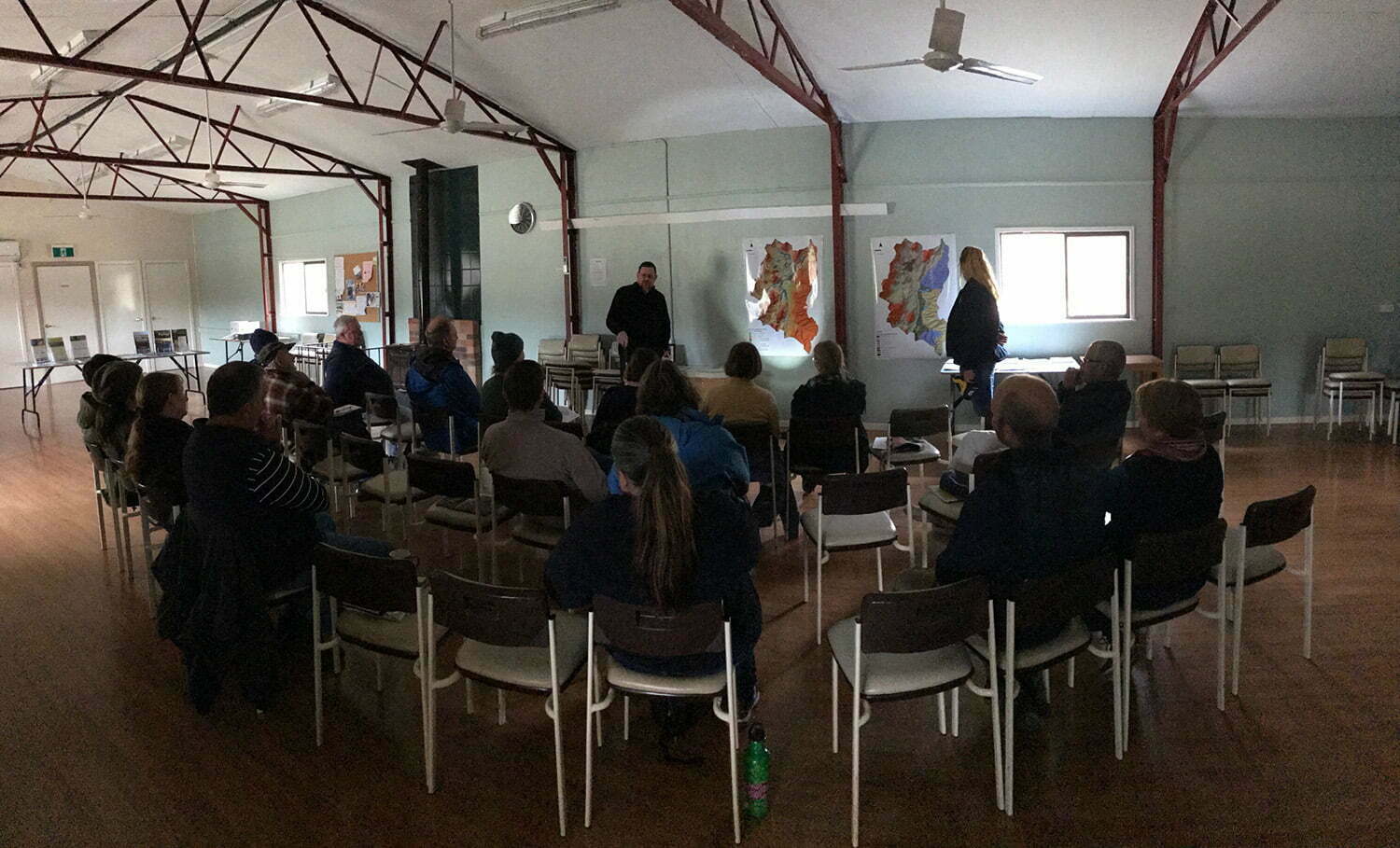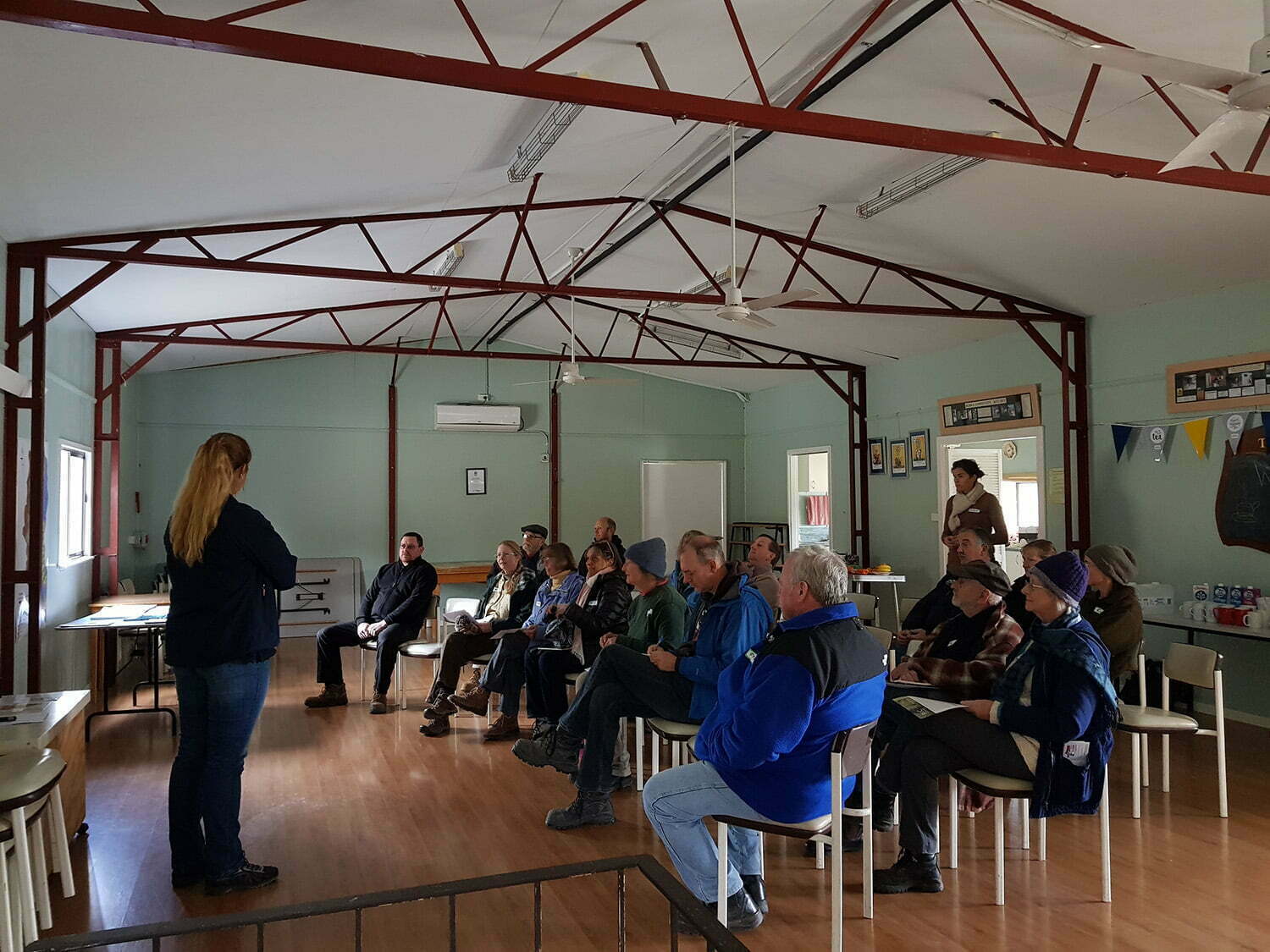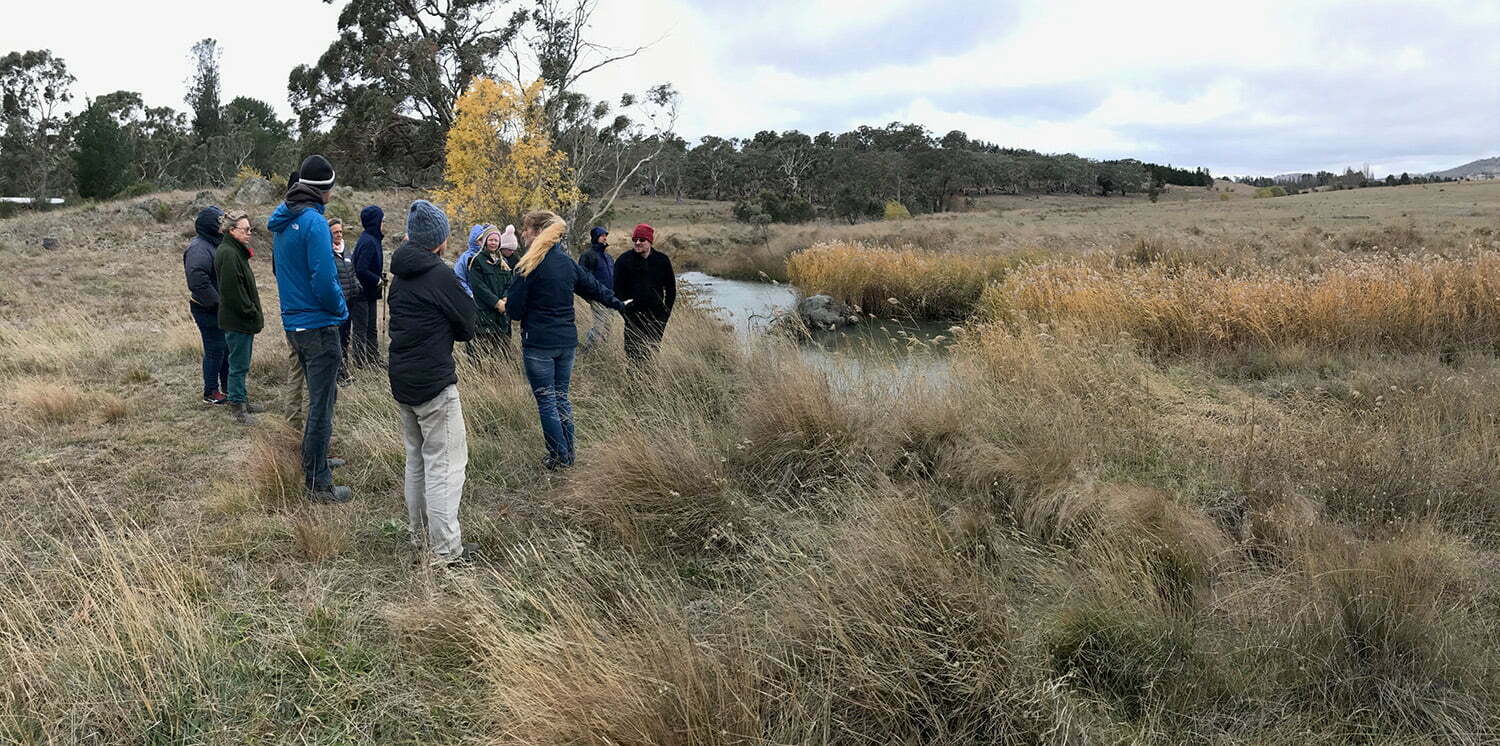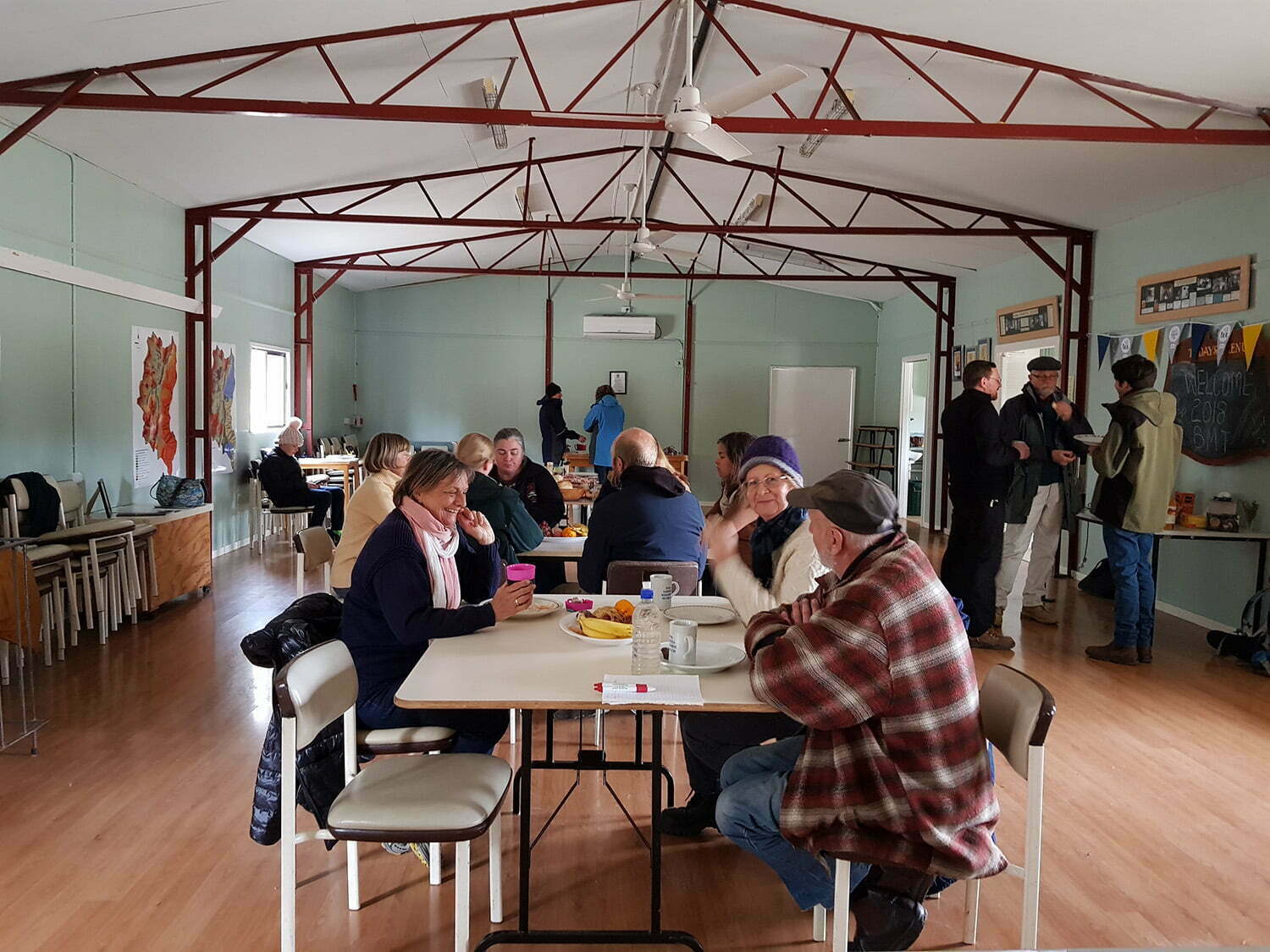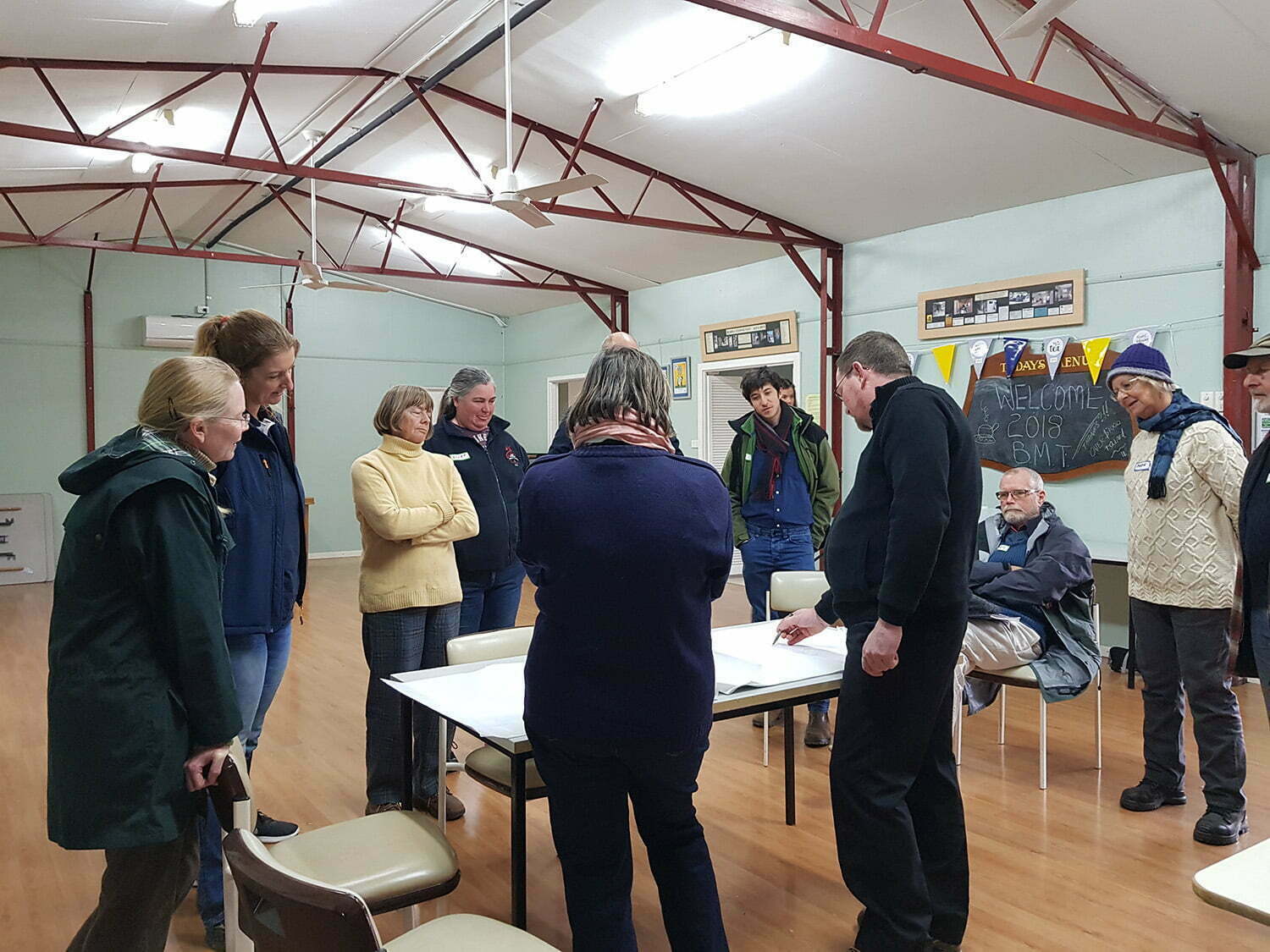It was a wild, windy and wet morning as I drove out to Burra, just on the outskirts of Queanbeyan and Canberra, to setup for our Erosion Community Conversation. When I arrived at the Burra Community Association Hall I was greeted by Janelle from the Molonglo Catchment Group saying “we’ve got no power”. I am sure you agree that this is not the best start to a community event promising tea, coffee, food and presentations!
After the initial moment of ‘yikes’, we looked around and saw there was a wood stove, a gas hotplate, an old-fashioned kettle, and a room that was light enough for us to at least see each other. We decided to go ahead and, after zipping up the road to talk to the SES guys working on taking trees off power lines, we knew that we had four hours till power was restored. The fire was made and lit, the kettle went on to the hotplate and we set up with maps, handouts and good cheer.
When our guest presenter Wayne Cook arrived, we let him know that powerpoint was not an option –Wayne was disappointed, as he had spent much of Friday working on a great slide presentation. We assured him we would still share his slides and they are provided here for you to explore.
Without powerpoint we focused on having a great conversation, and you can see in the photo that a handy torch shining on a map is an innovative way of ensuring people can see what you are talking about! We were fortunate that Wayne’s car had all his camping equipment including a water canister and torches, what is it they say about necessity being the mother of invention… 😊

Our morning discussion focused on the hydrogeological landscape of Burra, with the geology of the region examined through rocks, soils, the movement of water, and the impact of landuse. Many questions were asked, and Wayne had our audience of hardy Burra residents intent on learning more about the geology of their region.
Hydrogeological Landscapes in Burra, NSW
– Wayne Cook, Environmental Consultant
After another cuppa our group headed out into the cold… it was about 10 degrees with a wind chill factor that made it feel arctic. We looked at a couple of sites on the Burra Creek where gully and riverbank erosion had been treated. Different methods for stabilising soils were discussed, ranging from hard engineering approaches which are sometimes required, through to the use of small rock, hay and plants. Our overall aim with any of these projects is to reduce soil loss and erosion, thereby protecting water quality, stabilising the riverbank or gully, and enabling native plants to grow. Once we have native plants that we protect and look after, we are boosting biodiversity and ensuring long-term restoration occurs.
Back at the hall we had lunch and the butchers paper came out for another discussion about soil, ways to address erosion and other land management topics. Wayne talked about a great website that you can access here called ‘E-Spade’ where you can access the soil profiles of your region and investigate many layers of information.
The power came on just as we were wrapping up so at least we had hot water to do the washing up!
We want to extend a huge thank you to all those who participated despite the weather and, in particular, a huge shout out to Wayne for taking up the challenge of no powerpoint!
